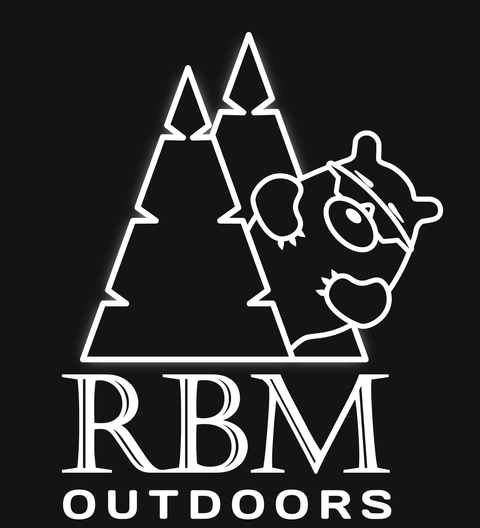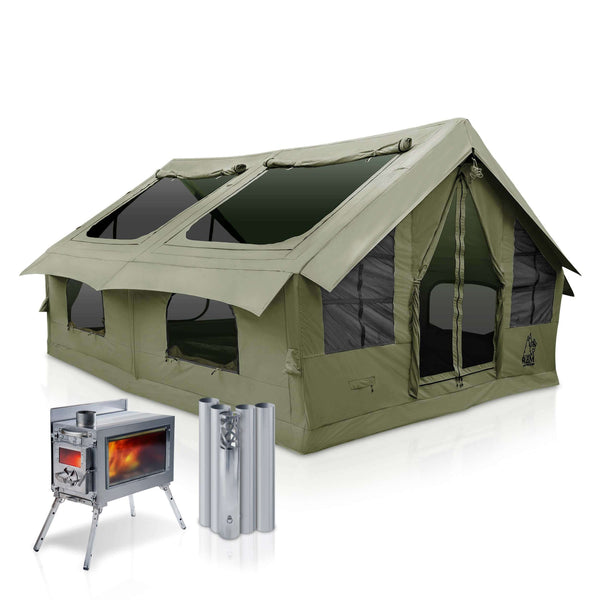Don't want to read? Listen to our podcast!
Contents
Cleaning Mold from a Canvas Tent
Mold is the headache of many homeowners. It attacks food and home items and can be a source of serious trouble. Even though most types of fungus are not dangerous, it can be a sheer nuisance and pretty much ruin your comfort. For campers, finding colonies on their canvas tents is a great frustration. Everyone knows how difficult (if possible at all) it is to remove it completely. But there is hardly a problem that cannot be solved, at least partially. This one is no exception. Let’s just take a look at what it is and what you can do about it.

What is mold?
It is a kind of fungus. It begins to reproduce when spores cling to a damp material. As it grows, it produces chemicals, which cause the material to decompose. Mold feeds on the decomposition products, thus refilling its energy and potential for further growth. It is a natural recycling mechanism that prevents the cluttering of earth with organic debris.
Spores are omnipresent. They float in the air, cling to clothes, walls, animals, and insects. They remain fertile for a good period of time and can cover long distances. When spores get into a moist and dark place, they begin to produce fungi. In their turn, the fungi produce more spores. These can grow into a big colony in less than 24 hours.

When is it more likely to grow?
Because tents are intended for outdoor use, they are exposed to moist and spores that are present everywhere. Canvas consists of fibers, which, unless treated properly, can be vulnerable to spores. For this reason, canopies are made of pretreated water- and UV-resistant material.
Manufacturers have to strike a balance between mold-resistance and comfort. Heavily treated materials do not breathe well and create a very humid environment inside. Moderately treated canopies provide optimal comfort and therefore are most popular. However, if not treated or stored properly, they can ruin one in less than no time. Mold is more likely to develop during storage. This happens when owners fail to clean their items properly after use. Drops of rain or dew and tiny particles of earth and dust remain on the canopy and create a paradise for fungi and bacteria when it is rolled up for storage.
Is plastic that good?
Many users seem a little afraid of caring for canvas and choose plastic tents. Plastic is a non-organic petroleum-based material. It is more resistant to fungi and requires less intensive care. However, it is very different. It is not biodegradable and is less likely to fall a victim to mold, but:
- It does not breathe well.
- It is hard, if not impossible, to repair a rip or tear.
- It can be affected by foul-smelling mildew.
- You cannot put a stove in a plastic tent.
It turns out that plastic cannot give you the comfort similar to canvas. Besides, plastic items are vulnerable to physical damage and hence are less durable.
How do I prevent contamination?
First thing you should not do is pack it right after use without cleaning and drying it. If your hiking tour is over, be sure that there is not a single drop of water on the canopy. Spread it on the ground in a sunlit place and let it dry off.
Always clean it thoroughly after use. Be sure that all pegs, guy-lines and bags are completely dry. If it is not a sunny day and you cannot dry it in the sun, pack it loosely and take steps to wash and dry it when you are back home.
Be sure to retreat the canopy after a period of time. The length of this interval depends on how often you pitch it and where. It is more advisable to treat it after about five months of regular use. You may need to retreat it more frequently if you hike in a damp and humid climate.
Some people believe that they can prevent mold by simply putting the tent in the sunlight. It is true that sunlight won’t let it grow fast. But it won’t kill the spores either! Many fungi have developed defense mechanisms making them impervious to solar radiation. Besides, UV destroys treatment and makes it more vulnerable to contamination.

How do I know that my item is affected?
Use every little chance to check your item for mold. You can identify it by tiny black, blue or green spots. Now that you have found out that things are not good, it is time to take appropriate steps. You should be a doctor for your tent and be sure to treat the disease before it deteriorates beyond cure. Let’s go for it right now.
Check out our products and choose the best for your camp!
What can I do about it?
If it is far from a protracted case yet, a few simple steps can work. These are:
- Apply distilled white vinegar to the area to nip it in the bud.
- Make a mix of salt, lemon, and hot water, dip a piece of soft cloth or brush in it and scrub the area. Do not use bleaches or detergents that can destroy fabric and treatment.
- Put it in a sunlit or dry place and let it dry completely.
- Retreat the entire item.
An affected canvas will never be the same again. However, if you take some simple steps and be patient, your item will remain usable for years. If things seem to have gone really far, do not get too frustrated and stay calm. Be ready to work a little harder and spend a little more time deep-cleaning it. Take it as a given that:
- Fungal contamination is impossible to remove completely.
- All you can do is stop it from further spreading.
- Your tent will never regain its brand-new quality or appearance.
- You will have to work really hard and maybe use someone else’s help.
This can be somewhat complex depending on the extent of damage. Let’s break it down into small yet important steps.

What should I have at close at hand?
- Sodium Percarbonate solution (DIY or bought)
- A big container that can fit the canvas and the needed amount of water
- A brush
- A stable and uninterrupted supply of water
- A dry and warm area (a garage, room in the basement, etc.) or a couple of warm and sunny days
- Mild soap and a mop
How do I deep-clean my tent?
- Separate the floor from the rest of the canvas.
- Use the brush to remove dirt, debris, bird droppings, etc. from the material.
- Dissolve the needed amount of sodium percarbonate in the water that fills the large container. Stir it until the stuff dissolves completely.
- Put the canopy (not the floor) into the container and add water until it covers the material.
- Use a large stick to stir the solution to ensure that it reaches every little part of your item.
- Leave it to soak for 4–8 hours and stir it from time to time.
- Prepare a dirt-free spot for drying your item.
- After the 4–8 hours of soaking, drain the liquid from the container.
- Put the container on its side, check the canopy and rinse it. If the traces of mold are still there, repeat the whole procedure.
- If the canopy looks well, fill the container with water and rinse the canopy. Do the procedure several times.
- Be sure to wash the tent floor separately in the same fashion.
- Spread the floor and the canopy in a clean and dry place (separately) and hose them down to remove the remaining soap.
- Let the canopy and the floor dry completely.
Now that you have finished the cleaning procedure, it is time to retreat your item. This will help you protect it against the harmful influence of moist and solar radiation and prevent further contamination.

And last, but not least: everyone knows as well as you do that prevention is better than cure!





 Air Tents
Air Tents  Coody 17.2 Inflatable Tent
Coody 17.2 Inflatable Tent  ALL SEASON TENTS
ALL SEASON TENTS  Cold Weather Tents with Stoves
Cold Weather Tents with Stoves  Tent Stoves
Tent Stoves  Tent Accessories
Tent Accessories 




Comments
Tom Downer said:
Very useful tips! Mold can be a real issue
Maheen Sutton said:
I’d advise to regularly check your tent for mold. It can spread rapidly, so be careful!
Coen Rhodes said:
Plastic tents may protect you from mold, sure, but they are very uncomfortable for so many reasons.
Stephan Barker said:
Is mold common?
Christian Denton said:
If you don’t dry your tent, the risk is higher. But it’s better to be prepared anyway